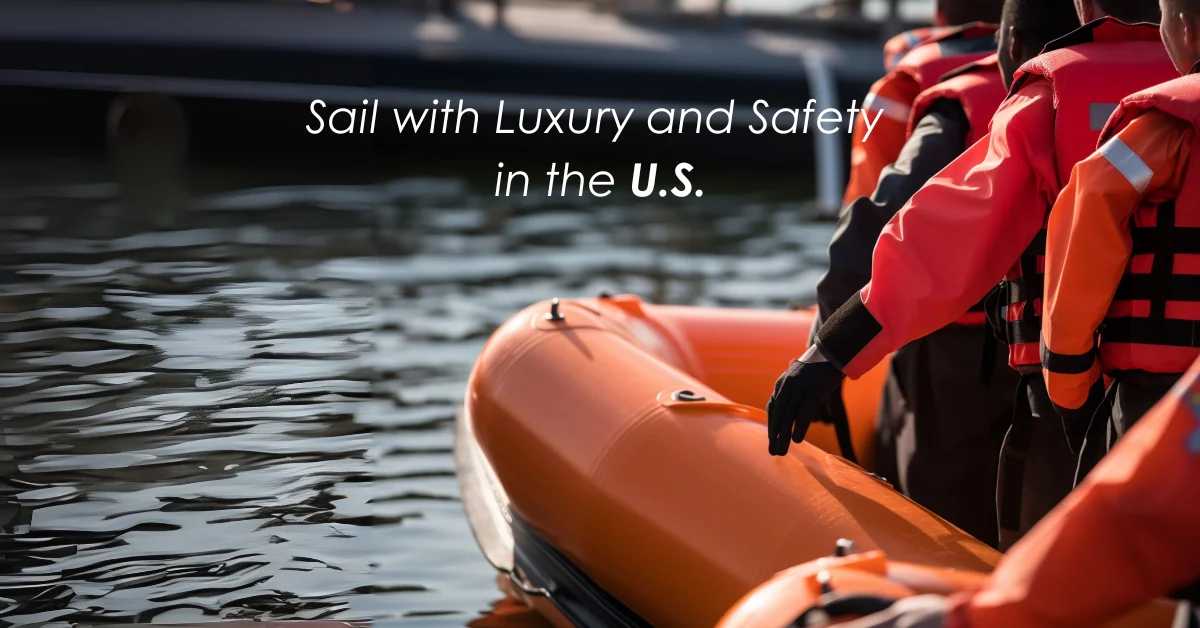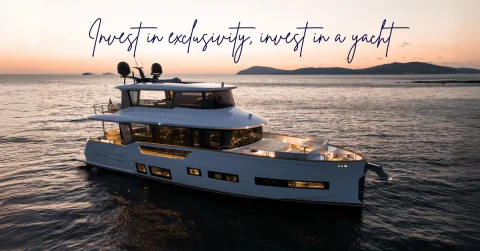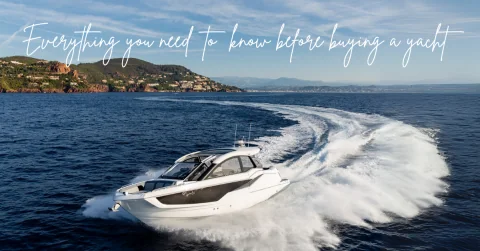Owning a yacht is more than acquiring a vessel—it’s embracing a lifestyle of freedom, elegance, and unforgettable experiences at sea. Whether you…

Safety Equipment for Luxury Yachts in the United States
Navigating U.S. waters aboard a luxury yacht means complying with strict federal regulations designed to protect all passengers and crew. In addition to the mandatory safety standards enforced by the U.S. Coast Guard (USCG), most yacht owners also follow recommendations from the American Boat and Yacht Council (ABYC) and the National Marine Manufacturers Association (NMMA) to reach world-class safety standards.
Whether you’re a seasoned yacht owner or planning to acquire your first vessel in the U.S., this guide outlines the mandatory safety equipment and additional recommendations to enhance your onboard security.
Legal Requirements in the U.S.: What the U.S. Coast Guard Demands
The USCG regulates all recreational vessels in U.S. waters. Requirements vary depending on vessel size, but for yachts over 26 feet (≈8 meters), the following minimum safety equipment is mandatory:
| Category | Required Equipment |
| Life Jackets | One USCG-approved Type I, II, or III PFD per person. Yachts >16 ft must also carry a Type IV throwable device. |
| Visual Distress Signals | USCG-approved flares (aerial or handheld) and a strobe light. |
| Communication | Marine VHF radio with Channel 16 access. |
| Navigation | USCG-compliant navigation lights, plus whistle, horn, or bell depending on size. |
| Fire Protection | USCG-approved B1 or B2 fire extinguishers (number depends on size/compartments). |
| General Safety | Engine ventilation systems, gasoline vapor detectors, bilge pump system. |
| Documentation | Valid state registration or official USCG Documentation. |
Non-compliance can result in steep fines, vessel detainment, or license suspension.
International Standards and ABYC/NMMA Best Practices
Beyond legal requirements, many luxury yacht owners equip their vessels to international safety standards, including:
- EPIRB (Emergency Position Indicating Radio Beacon) registered with NOAA
- Automatic life jackets with integrated harness and light
- AIS personal transponders for each crew member
- Gas leak alarms (CO, butane, LPG)
- Engine room fire suppression systems
- Fenders and hull repair kits
- SOLAS-certified life raft for all onboard
Additional Tips for Safe Cruising
- Crew training: Conduct regular drills for fire, man overboard, and evacuation.
- Scheduled maintenance: Inspect radios, extinguishers, and flares annually.
- Expiry checks: Replace inflatable PFDs, detectors, and flares before expiration.
- Pre-departure checklist: Include fuel levels, batteries, documentation, and critical spares.
Safety Equipment by Category
Personal Safety
- USCG-approved Type I–III inflatable life jackets
- Harnesses and lifelines
- Personal AIS or PLB beacons
Fire Prevention & Control
- Fixed fire suppression systems in the engine room
- CO detectors in all cabins
- Additional extinguishers in the galley and cabins
Signaling & Visibility
- AIS Class B/C
- Active radar reflectors
- Long-range visual distress signals
Communications
- VHF radio with DSC (Digital Selective Calling)
- Satellite phone or Starlink Maritime for remote areas
Emergency Gear
- SOLAS-approved life raft
- Advanced medical kit
- Waterproof emergency manual
How to Choose the Right Equipment for Your Yacht
In the U.S., your safety gear should align with:
- Yacht size and gross tonnage (GT)
- Navigation zone (inland, coastal, or offshore)
- Number of passengers and crew
That’s why most owners seek guidance from certified yacht brokers or marine safety consultants.
Camino al Mare: International Luxury Meets Trusted Safety
At Camino al Mare, we go beyond Mexico. We support our clients throughout the purchase, importation, and outfitting of yachts in the United States and the Caribbean, ensuring full compliance with USCG and ABYC/NMMA standards.
Under the leadership of Roberto Camino, our founder and nautical advisor, we make sure each yacht is prepared to sail with luxury and safety in any jurisdiction.
FAQs
What happens if I don’t carry USCG-approved equipment?
You may face fines, vessel detainment, and legal penalties.
Are inflatable life jackets accepted by the USCG?
Yes—if they are Type V approved and properly maintained.
Is an EPIRB mandatory for private yachts in the U.S.?
Not always, but it’s highly recommended and required for offshore or commercial operations.
Where can I buy certified safety equipment in the U.S.?
From USCG/ABYC/NMMA-authorized retailers (e.g., West Marine, Defender, and specialty dealers).
Conclusion
Cruising in the United States demands adherence to USCG regulations and adoption of global safety standards.
A luxury yacht should reflect not only comfort and elegance, but also responsibility and readiness for any emergency.
Investing in safety means investing in peace of mind, resale value, and lives protected at sea.
Relacionados
Buying a yacht is an exciting decision—one that blends passion, lifestyle, and a significant investment.Whether you’re considering acquiring your yacht in the…


